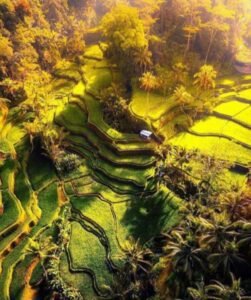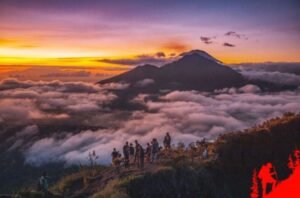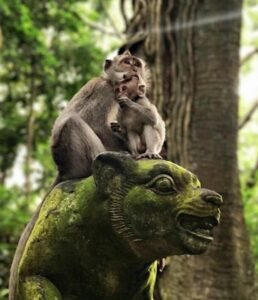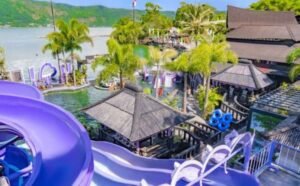
BALI SUNRISE TOUR book here, https://balisunrisetour.com
Kintamani Tour Packages – Kintamani Day Tour is one of the most preferred tourist program on the island of Bali. This tour is a full day private tour packages that include schedule of the tourism in Bali, culinary and cultural travel. Kintamani Bali is also famous cause mount Batur trekking.
Places You Will Visit With Kintamani Day Tour Package :
- Cultural Tourism: Tirta Empul Temple, Goa Gajah Temple, And Barong Dance Performance.
- Culinary: Lunch At Kintamani While Enjoying The View Of Batur Volcano, Mount Abang, Mount Agung And Batur Lake
- Tourism Shopping: Sukawati Traditional Market And Craftsmen Of Silver In Celuk.
If You Are Holidaying In Bali With Limited Time, This Full-Day Tour Package Can Be One Right Choice To Complement Your Holiday In Bali.
| Tour Package | Price | Promo |
|---|---|---|
| Bali Waterfall Exploration | Rp. 200K / Person | |
| Bali White Water Rafting | Rp. 250K / Person | |
| Mt Batur Spectacular Sunrise Trekking | Rp. 350K / Person | |
| Mount Batur Sunrise Jeep | Rp. 350K / Person | |
| Mount Batur Jeep – (Day Tour) | Rp. 350K / Person | |
| Caldera Sunrise – Double View | Rp. 400K / Person | |
| Popular Activities Near by Ubud – Full Day | Rp. 500K / Person | |
| Ubud ATV Quad Adventure | Rp. 650K / Person |
Kintamani Tour Packages Price :
| Person | Price |
| Two Person | USD 60/Person |
| Three Person | USD 55/Person |
| Four Person | USD 50/Person |
**The trekking costs above are just an illustration, just an indication/not updated.
Tirta Empul Temple
Tirta Empul Temple is built around the sacred spring at Tampak Siring. For more than a thousand years, Balinese worshipers have been drawn to Tirta Empul Temple whose sacred spring is said to have been created by Indra and to have curative properties. The tradition continues almost unchanged at the temple today. Over 1000 years old, the temple and its two bathing places have been used by the people for good health and prosperity because of the spring water’s curative powers. The most visited tourist destination in the Ubud area, to see the uniqueness of this Tirta Empul Temple, where holy water from springs in Tirta Empul Temple flows into the pool and is used by the local community to do physical self-cleaning. and the soul is believed to have a positive effect after soaking in this holy water which will make the negative things in your body and soul disappear and make your body and soul clean again
Mythology Of Tirta Empul Temple
It is narrated in the Usana Bali Lontar that Tirta Empul or Tirta Ri Air Hammpul was created by Bhatara Indra when he was at war with King Mayanadenawa of Be predecessor, the king is said to be very powerful and has the ability to disappear. Because of his supernatural powers, Mayanadenawa considered himself to be God, for that reason Bhatara Indra fought him. In a battle that took place in an area, Mayanadenawa and his troops were pressed, then they walked with their feet tilted, therefore, the area where the battle was then called Tampaksiring. In an unfavorable and life-threatening situation, Mayanadenawa came up with a bad idea by creating a poisonous spring (Yeh Cetik) for the purpose of destroying the troops of Bhatara Indra. And the bad idea turned out to be successful and because of fatigue due to constant fighting, finally many of Bhatara Indra’s troops drank Yeh Cetik. Not a few of Bhatara Indra’s troops were poisoned by drinking the poisoned water, which reduced the strength of Bhatara Indra’s troops a lot. To deal with the problem, Bhatara Indra then stuck a pennant-shaped weapon into the ground. Instantly a spring appeared that pooled upwards from the former stab of the celestial king’s weapon. After drinking the spring, Bhatara Indra’s troops recovered as usual. From this myth and centuries later the spring was arranged and perfected into a water garden by king Indrajaya Sigha Warmadewa in 882 aka and was given the name “Tirta Ri Air Hampul” or “Tirta Empul” which means steaming Pathirtaan. And until now this temple is known as Tirta Empul or also often referred to as Tampak Siring Temple because it is located in the village of Tampak Siring and the location is adjacent to the palace of the first president Sukarno, which is in Tampak Siring.
History Tirta Empul Temple
Based on the inscriptions found, it can be concluded that Tirta Empul Temple was built during the reign of King Masula and Masuli which can be seen from Usana Bali’s papyrus which reads “At that time all Balinese were happy, led by His Majesty Raja Masula Masuli, and the people all felt happy, all the people are equally issued padas, as well as other building materials, such as from Blahbatuh, Pejeng, Tampaksiring”. From the contents of this Balinese lontar usana Bali, it can be traced the reign of King Masula and Masuli in Bali and found in the Sading inscription which states that King Masula Masuli reigned in Bali starting in 1100 AD or 1178 AD, who ruled for 77 years. This means that there is a time difference of about 216 years between the construction of the Tirta Empul baths and the construction of the temple. Architecturally, the Tirta Empul Bath and Temple have historical values, spiritual vibrations, distinctive characters, and are friendly and friendly to the environment. The architectural appearance breathes tradition, and blends with the surrounding natural conditions. The spaces also imply a religious meaning.
Archaeological research that began in the early twentieth century has found evidence that the area in Tampak Siring does store a number of archaeological remains which are still functioning sacred (sacred living monuments), scattered in Panempahan Village, Manukaya Village, and Tampaksiring. The dense population of cultural heritage in this area can be seen as an indication of community settlements and dense occupancy or high social mobility that occurred in the past. The concentration of cultural heritage in this village can also be considered that Ancient Balinese civilization was born in this cultural area. One of the cultural heritages scattered in this area is Tirta Empul Temple.
Goa Gajah Temple
Which is located in west side of countryside, Blah Batuh Sub district and Gianyar Regency. It is about 27 km from Denpasar town. This cave is built at crevasse edge from the federation of 2 rills that is called Pangkung River, where the irrigation is mixed with Petanu River flow. The federation area of two rivers is called Campuhan/Mixture. It owns the magical energy on the basis of Rwabineda Concept/two different matters on this basic concept hence Goa Gajah Temple or Elephant Cave Temple is intentionally built among two rivers. It is a very worthy site for you to visit, here you will know about the history of the development of Hinduism in Bali and see the relics of statues and sites that are very historic and have high value in the development of the island of Bali. With a very comfortable atmosphere near the river, it makes the atmosphere comfortable and cool and full of religious aura
History of Goa Gajah Temple
As for history, it can be said that Goa Gajah temple was built in the period 10-11 AD, which at that time was the dynasty of the Warmadewa kingdom, while the name Goa Gajah refers to the statue of Ganesha found engraved on the cave wall. In 1923 the elephant cave site was discovered by L.C Heyting who at the time of discovery, he found Archa Ganesha, a statue of Tri Langga and also a statue of Hariti. Furthermore, a follow-up study was carried out by Dr.W.F. Stutterhiem in 1925 and also in 1950 carried out further research by the Indonesian side, namely from the Indonesian archaeological site in 1954 to 1979 which resulted in the discovery of a small pond which is now in front of the mouth of Goa with six statues of women and their showers. The water flowing from the shower is believed by visitors who come there to make their age younger. A very shocking discovery of history, where from this discovery it can be seen that we are familiar with the existence of beliefs in ancient times, while some statues such as Ganesha figures are god figures found in Hinduism long time ago, and the spread of religion had occurred at that time
Meaning Name Goa Gajah
The word of Goa Gajah is anticipated coming from the word of Lwa Gajah, the name of Buddhist Temple or hermitage for Buddhist monk. The Goa Gajah’s name is written on Negara Kertagama papyrus which is compiled by Mpu Prapanca on 1365 M. Lwa or Lwah/Loh mean the river and it reflect to the meaning that the hermitage is located at Gajah River or in Air Gajah. In the year inscription 944 Saka, it is mentioned with the name of ‘ser ring Air Gajah’ that is meaning the Subak leader in Air Gajah. The word has mentioned that the hermitage of Lwa Gajah is located in Subak Air Gajah. Among the local residents, the Goa Gajah Temple is better known as Cave Temple, located in the west of Bedahulu Village, Blahbatuh Subdistrict, Gianyar Regency. It is about 27 km east of Denpasar. A visit to this temple can be done easily because it is only a few feet below the highway toward the village of Tampaksiring Indeed this temple was built at the valley of Petanu River having beautiful natural panorama.
Barong Dance Performance
Barong and Keris Dance is a traditional Balinese dance performance that tells the story of an endless battle where the fight between Barong who represents the good character and Rangda who represents the evil character, where in this story the barong wins the battle. In addition, in this dance performance there is a trance dance attraction where the dancer will stab a dagger in his body and uniquely his body is not injured at all. A dance performance that is full of meaning and inspires our lives where we are taught to behave well to fellow human beings in order to create harmony in living this life. Barong is a character in the mythology of Bali. He is the king of the spirits, leader of the hosts of good, and enemy of Rangda in the mythological traditions of Bali. Banas Pati Rajah is the fourth brotheror spirit child that accompanies a child throughout life. Banas Pati Rajah is the spirit which animates Barong. A protector spirit, he is often represented by a lion, and traditional performances of his struggles against Rangda are popular parts of Balinese culture. The Barong Dance is often portraited with two monkeys
What is Barong?
Barong is a mythological character whose aim is to protect Bali from all kinds of evil disturbances that threaten the island of Bali. The barong is depicted in various forms of worshiped animal guises such as lions, tigers, wild boars, buffalo, elephants, or dogs. Barong has emerged as part of Javanese and Balinese culture since people still believe in animistic beliefs. And in Bali the shape of the barong character is like a mixed animal face with a scary but good character. Made in such a way that it can create a religious feel when you see it. Barong bali originated as a development of barong ponorogo or Reog, which King Airlangga brought when he fled to the island of Bali to save himself. Besides Barong Ponorogo, Airlangga also brought other forms of literary art, Javanese script, and religious rituals. This influence can be seen from the shape of the ponorogo barong when it appears without using a peacock crown.
Types of Barong
The types of barong in Bali are very diverse with different looks and functions, and not just any dancer is performed because it takes enough practice to be able to perform this barong dance professionally. The types of barong found in Bali are Barong Ket, Barong Bangkal, Barong Landung, Barong Macan, Barong Gajah, Barong Asu, Barong Brutuk, Barong Lembu, Barong Kedingkling, Barong Kambing and Barong Gagombrangan. The types of barong take the form of animals such as elephants, dogs, goats, oxen and others with four legs. Where the barong is performed by two people, one person holds the head and one person holds the tail, if you have ever seen the Barong Sai dance from China, then the barong dance in Bali is somewhat similar to that, the only difference is that Balinese dance is performed with a typical dance technique. Bali is more prominent without doing attractions like those in barong sai. The type of barong that we often see in Barong and Keris Dance is the type of Barong Ketket. This show is performed by dancers who have been trained and performed very well with a comedy spice, making the audience of this barong dance happy and carried away by the storyline that was delivered.
| Tour Package | Price | Promo |
|---|---|---|
| Bali Waterfall Exploration | Rp. 200K / Person | |
| Bali White Water Rafting | Rp. 250K / Person | |
| Mt Batur Spectacular Sunrise Trekking | Rp. 350K / Person | |
| Mount Batur Sunrise Jeep | Rp. 350K / Person | |
| Mount Batur Jeep – (Day Tour) | Rp. 350K / Person | |
| Caldera Sunrise – Double View | Rp. 400K / Person | |
| Popular Activities Near by Ubud – Full Day | Rp. 500K / Person | |
| Ubud ATV Quad Adventure | Rp. 650K / Person |
Kintamani Tour Packages Itinerary :
- 8:00 Pick Up On Your Hotel
- 09:00 Watching Barong Dance
- 10:00 Visit To Batik And Souvenir Center Of Bali
- 11:00 Visiting To The Center Of Silver In Celuk
- 12:00 Visit To Goa Gajah Temple
- 13:30 Lunch At Lake View Restaurant Kintamani With Buffet Style Menu.
- 15:00 Visit To Tirtha Empul Temple In Tampaksiring
- 16:00 Visit To The Sukawati Traditional Art Market
- 17:30 Back To Your Hotel.
Kintamani Tour Packages Inclucion :
- Private Car Air Conditioner
- Private Tour Guide
- All Entrance Tickets
- Lunch At Kintamani
- Enough Drinking Water
Terms & Conditions :
- The Tour Is Private Tours And That Means There Is No Other Participant
- Minimum Booking Is Two Persons
- Single Traveler Will Charge: Price Of Two Persons – 15%
- Infant Under 4 Years Old Is Free Of Charge
- The Tour Will Assist By English Speaking Tour Guide
- Reasonable, Fair Price And No Hidden Fees












